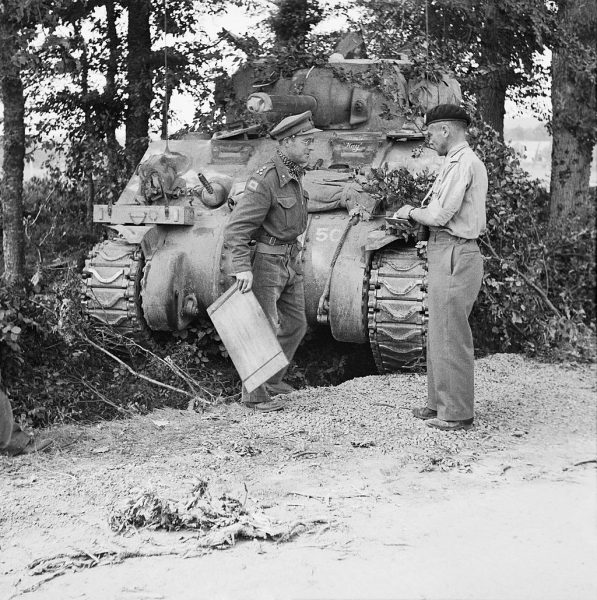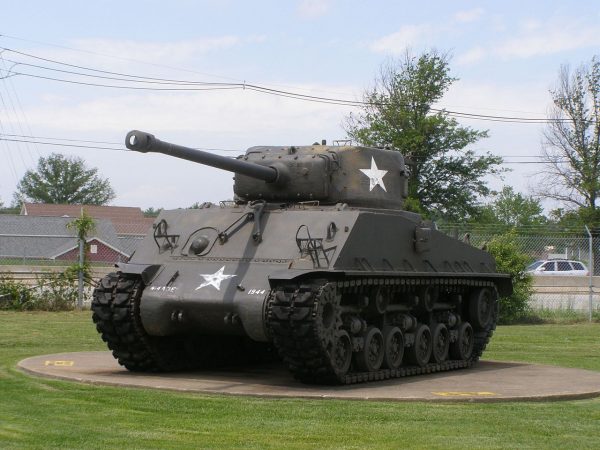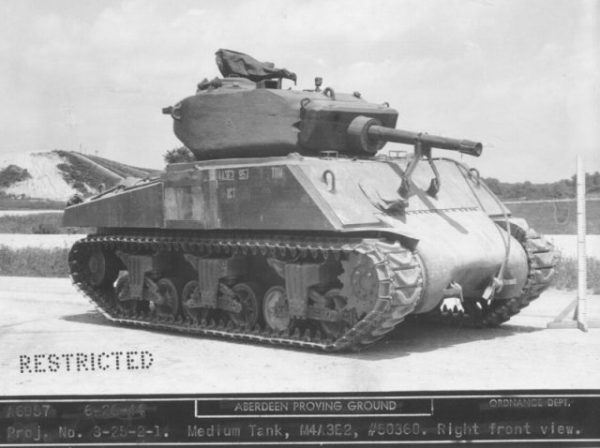The Mighty M-4 Sherman Tank – WWII Workhorse

The iconic Sherman tank was a mainstay for the Allies in World War II and beyond.
Early in the war, the tanks gained the nicknames “Burning Grave” and “Tommy Cooker” for their propensity to catch fire after a direct hit.
The problem was determined to be the ammo storage. Switching from “dry” to “wet” ammunition stowage greatly helped the issue.
Wet magazines placed water containers around the ammunition. Doing this reduced the ratio of tanks catching fire after a direct hit to 15%, down from the 60%-80% reported earlier in the war.
After working through the early design issues, the Sherman tank came to be known as a mechanically reliable and effective tank. More effective when used in a group rather than alone, they are the only tanks used in every theater of WWII. They were leased to Britain and given to France and the USSR as well.

After WWII, the Sherman tank continued to be used by the US, especially in the Korean War. The Israelis also used the them, notably in the Six Day War in the late 1960s and the Yom Kippur War in the early 1970s.
Officially known as the M-4 tank, they were originally manufactured with the 75mm M3 gun which was found to not be very effective in the anti-armor role.
Although was well liked for its high explosive rounds which were very effective against infantry and defensive positions.
After encountering later, heavier German tanks, this was replaced with a 76mm gun that fired 15 pound shells. The tanks were also armed with a .50 caliber machine gun for anti-air defence, and two .30 caliber machine guns for anti-personnel defence.
It was also possible to outfit the Sherman tank with a flame thrower, something that was used to great effect in the Pacific Theater.

M-4s were manufactured by Ford Motor Company, Detroit Tank Arsenal (Chrysler was the parent company) and Fisher Tank Arsenal.
The tanks cost $33,000 each – equivalent to $550,000 today. Each tank weighed around 60,000 pounds and could reach top speeds of 30 miles per hour.
It was the second most numerous tank in the war. Between 40,000 and 50,000 were produced beginning in 1941.
The first M-4s to see battle were deployed in 1942. By the end of the war, the Sherman had used many different engines, from the original 350 horsepower radial engine, to the 500 horsepower Ford GAA V8.
Each tank held a crew of up to five men: the gunner, driver, co-driver, loader and commander.
Recognizable by the 56-degree slope of the front of the body, the Sherman tank was fitted with between 2-3 inches of armor on the hull front.
The roof was the most lightly armored part, having less than an inch of plating in some places. The M4A3E2 Sherman ‘Jumbo’ version of the tank was the most highly armored variant, having over four inches of armor on the upper glacis. Although this model weighed almost 7 tonnes more than a standard Sherman.

The M-4 Sherman is also notable for being one of the first tanks to include a gyroscopic stabilizer on the main gun. This kept the gun trained on the target even while the tank was in motion at up to 15 miles per hour. The Sherman was found to have a 70% success rate of hitting targets within 300 to 1200 yards.
Another Article From Us: Australia Moves Closer to Purchasing Self-Propelled Howitzers
Though the Sherman was retired by the US military, there are still some in active duty in other parts of the world. Paraguay, for instance, has ten active for training plus five more in storage.
